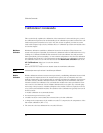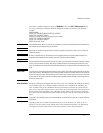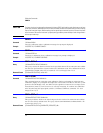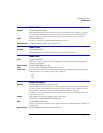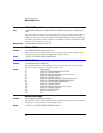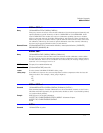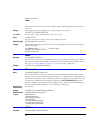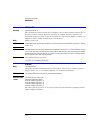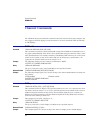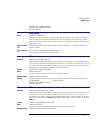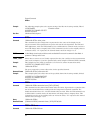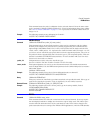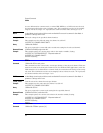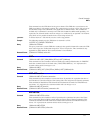
7-10
Calibration Commands
SKEW:AUTO
SKEW:AUTO
Command CALibrate:SKEW:AUTO
This command sets the horizontal skew of multiple, active channels with the same bit rate, so
that the waveform crossings align with each other. In addition, auto skew optimizes the
instrument trigger level. Prior to auto skew, at least one channel must display a complete eye
diagram in order to make the initial bit rate measurement.
Mode NRZ Eye mode only.
NOTE In Jitter Mode, skew adjustments are disabled. Do not use this command in Jitter Mode. It generates a “Settings
conflict” error.
NOTE Auto skew uses the current color grade measurement completion criterion (refer to “CGRade:COMPlete” on page
18-5). If auto skew fails to make the bit rate measurement or determine the time of the crossing points needed
to compute the skew, it may be necessary to increase the color grade completion criterion. Increasing the value
will increase the time for auto skew to complete.
Example This example initiates auto skew.
10 OUTPUT 707;":CALIBRATE:SKEW:AUTO "
STATus?
Query :CALibrate:STATus?
This query returns the calibration status of the analyzer. These are nine comma-separated
integers, with 1 or 0. A "1" indicates calibrated; a "0" indicates uncalibrated.
NOTE Use CALibrate:RECommend? to query for recommended calibrations.
Returned Format [:CALibrate:STATus] <status><NL>
<status> <Mainframe Calibration Status>,
<Channel1 Module Calibration>, 0,
<Channel2 Module Calibration>, 0,
<Channel3 Module Calibration>, 0,
<Channel4 Module Calibration>, 0
The values that always return “0” are used to make the returned format compatible with the
Agilent 83480A and 54750A.



